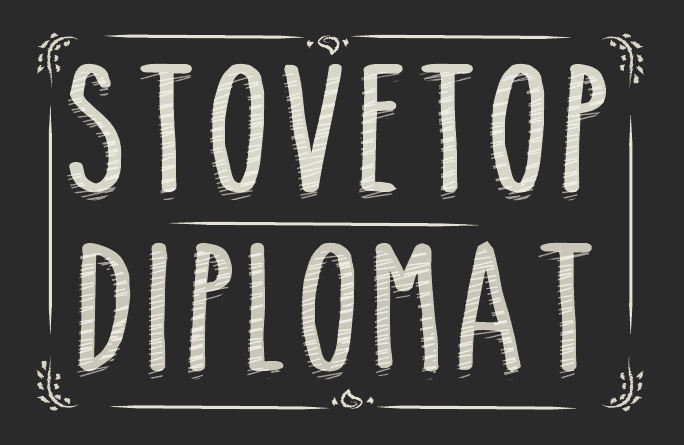What are plantains?
Plantains vs. Bananas
Plantains have a thicker skin and are longer in length than bananas. They have a lower sugar content and a higher starch content, especially when green or unripe. They have extra-firm flesh as compared to a banana. Although technically considered a fruit, they are more often consumed like you would a vegetable – fried, simmered into soup, boiled and so on
Which countries and cuisines use plantains?
Plantains are a staple food in many places across the globe. Although the plantain is thought to have originated in southeast Asia, it has spread globally to other tropical places. These places include Central America and the Caribbean, parts of South America, India and Africa. Because plantains grow best in hot and humid climates, you tend to find them globally in the cuisines of cultures near the equator.
Because the trees fruit year-round, they are a high-carbohydrate, reliable source of food for many countries. Plus they can live for up to a hundred years! They require little in the way of temperature controlled storage after harvesting, making them an excellent choice for many developing countries.
What are the nutritional benefits of plantains?
The Colors of Plantains and When They’re Used
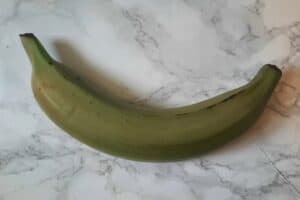
Green – At this stage, plantains have hard, starchy, neutrally-flavored flesh similar to a potato. Like potatoes, they can be fried into chips or simmered into stews. They can also be dried and ground into a grain-free, gluten-free flour.
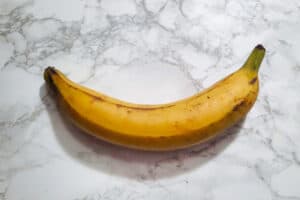
Yellow- at this stage, the flesh is beginning to soften and sweeten. If green plantains resemble a potato, yellow plantains resemble a sweet potato! The flesh is still going to be hard. You can wield them as you would a potato- use them in hash, bake/roast them in the oven or simply fry in a little butter!
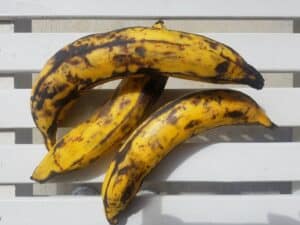
Black and yellow- this is when the fruit is considered considered at its peak ripeness. They are still starchy, but are starting to turn softer and sweeter. In this stage, they are excellent for roasting, as in my Cuban Picadillo Stuffed Plantains recipe.
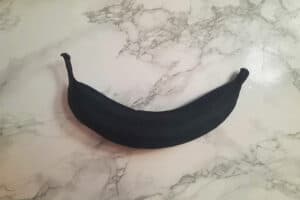
Black – once black, the flesh beneath the peel is totally soft. They are very sweet in this stage and are used in applications closer to dessert. If yellow plantains are closer to a vegetable, then black plantains are closer to a fruit! You can find black plantains used in maduros, plantain cakes, and plantain bread.
How to peel a plantain:
Unlike bananas, plantains can be tough to peel by hand. No matter their stage of ripeness, I almost always use a knife. Best practice is to cut off the top and bottom end. Then use a small paring knife to cut into the peel (but not the flesh) and score it all the way to the other end. You can then remove the peel. Check out the pictures below!
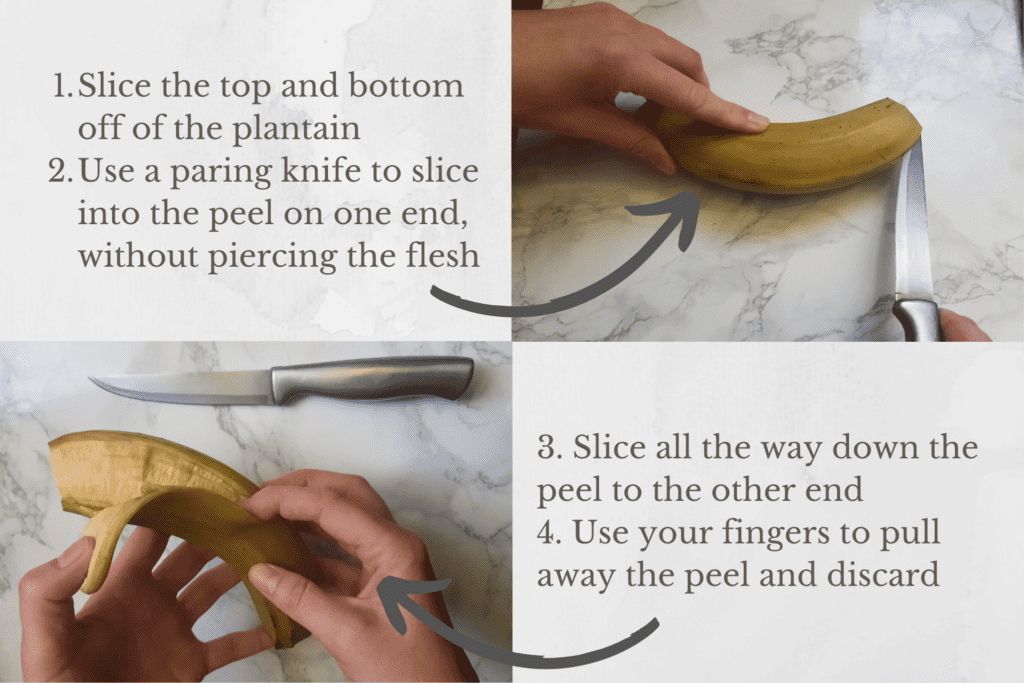
Click here for more ingredient profiles!
